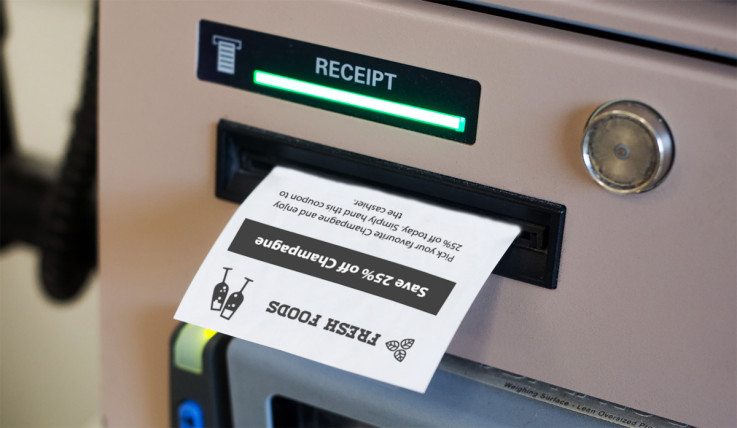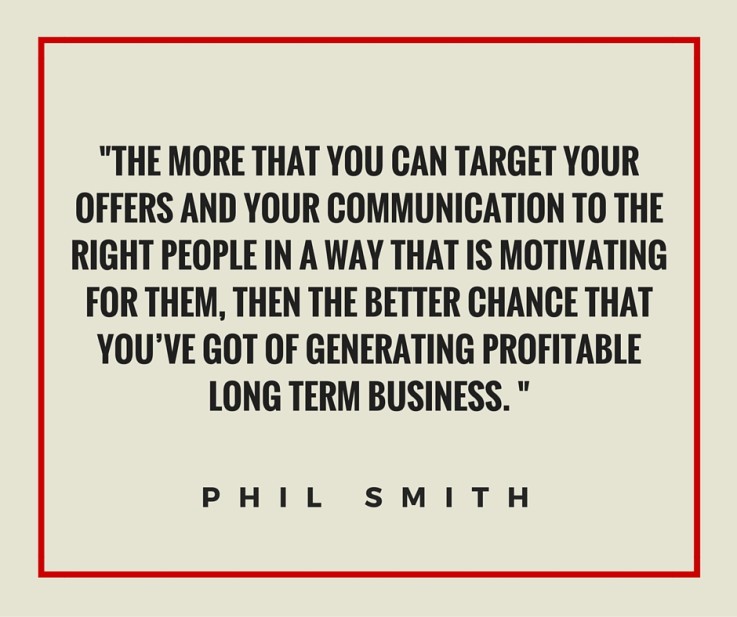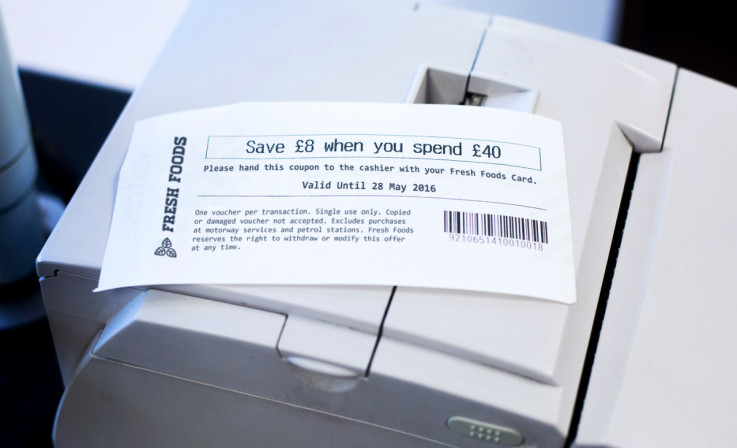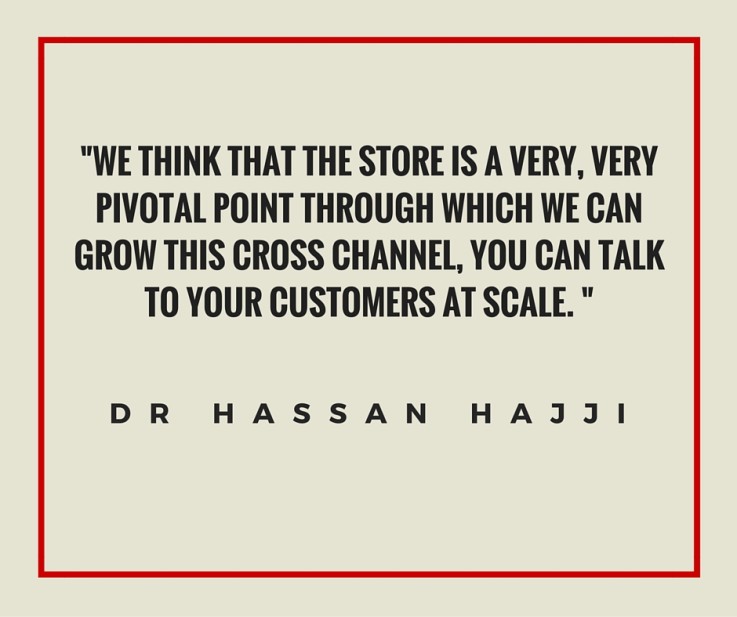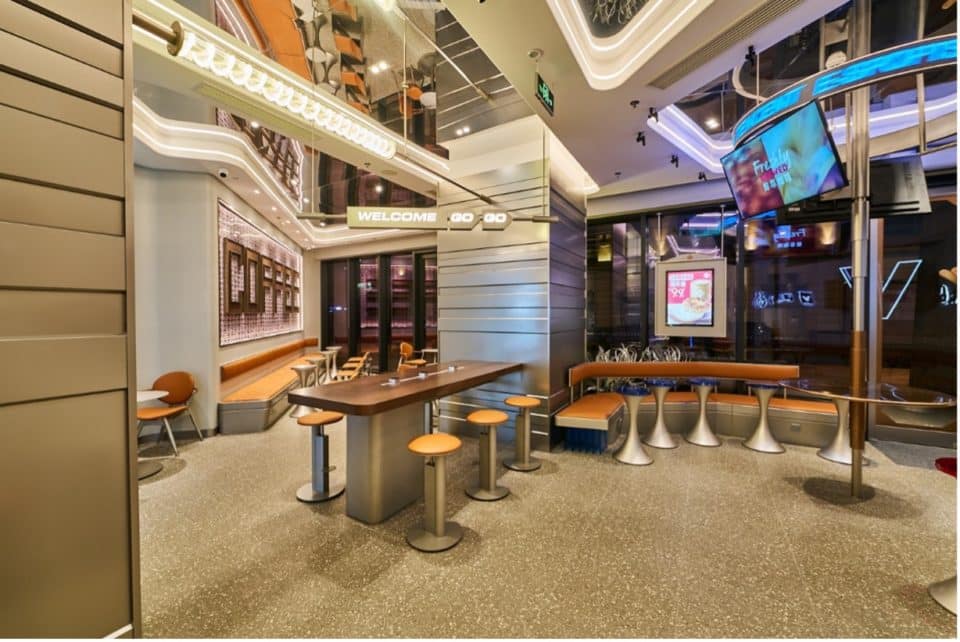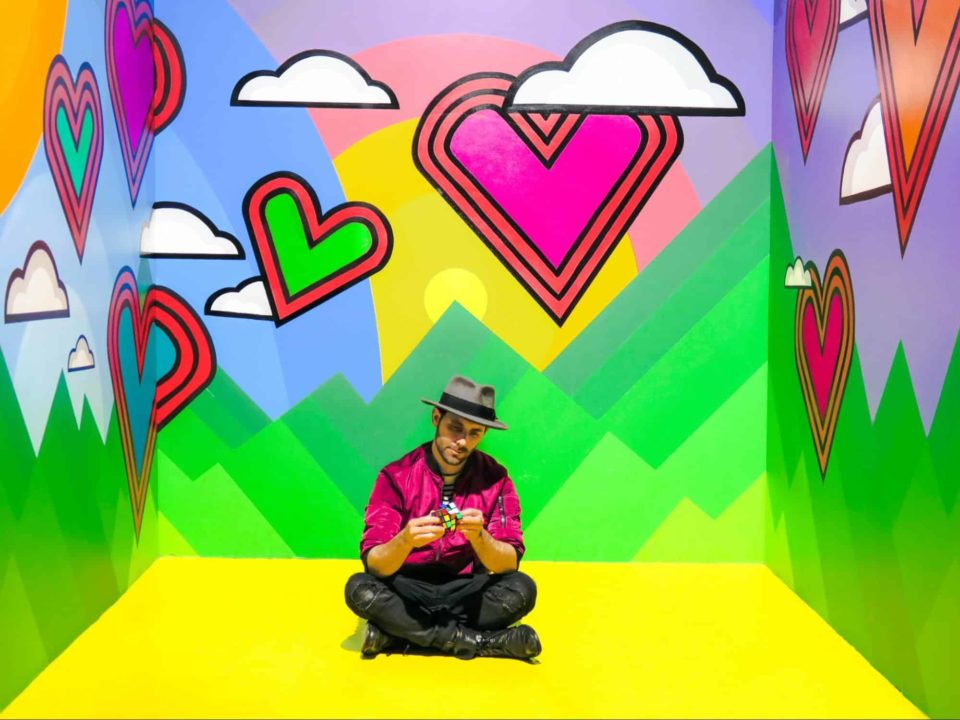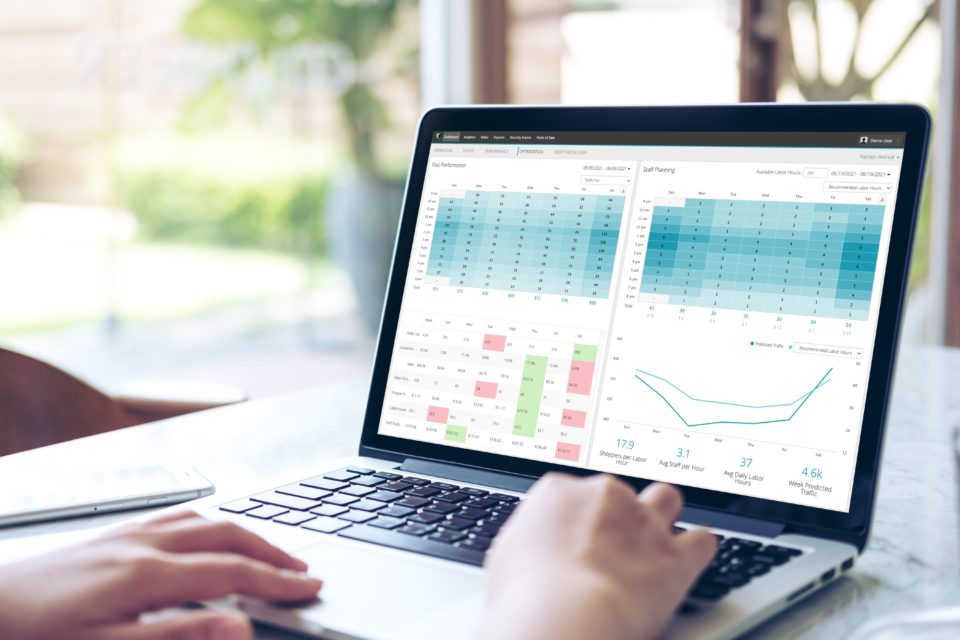Point of difference: Ecrebo’s Dr. Hassan Hajji and Phil Smith on why the next phase of loyalty will do away with multiple cards experience


Specialising in point-of-sale marketing, Ecrebo enables retailers to provide targeted offers and communications to customers right at the till. We spoke to Dr. Hassan Hajji, Ecrebo’s Co-founder & CEO, and Phil Smith, Ecrebo’s Vice President of Sales & Marketing, about redefining loyalty, targeting offers for returns and how the next phase of loyalty will move away from individual cards for every store.
Can you tell me what Ecrebo does in a nutshell?
Phil Smith: We’re all about being able to market to the customer in a very targeted and relevant way from the point-of-sale (POS), particularly the POS, not just for the transactional side, but particularly about it as a medium of relevant communication. What we do is we serve up highly targeted communication to customers alongside their till receipts, either in paper form or in a shape of digital receipts, and that can be information or it can be offers and promotions.
Is there anything about what you that do makes you different from any other platform?
Phil: There’s nobody that does quite what we do in terms of paper and digital form and on top of that the way we do this is unique. The way in which our software is put together allows us to be installed very quickly, very flexibly at low cost on almost any retailer’s existing POS system, existing hardware, existing till printers, in order for them to be able to prove the concept and to make the business case. We’re doing that in the matter of a few weeks, rather than months, which is how people normally think about anything POS.
Does that make it more cost effective for anyone to have this sort of offering?
Phil: Yes, we think that any retailer should be looking at this. We’ve been able to demonstrate to some of the customers who signed up with us that they could get a payback on their investments within a matter of weeks, rather than months or years. Because we can get it up and running so quickly, and because the results are so compelling.
What’s the typical kind of return that people see from working with you?
Phil: We’ve had a number of big customers who have been able to see a return from their marketing investments of three times or four times or sometimes even five times, so £4 in extra sales for every £1 in marketing spend. And they’ve done that in a number of ways. Some of them have done it by using very highly selective spend and save offers, stretch spend offers, so depending on who you are you’ll get an offer that gives you £5 off a £50 next spend or £10 off a £100. And the additional sales those generate are very high. And they’ve also used it for very big offers to drive customers from one category to another category, so if they’ve bought womenswear but not lingerie then they can be sent the relevant offer there.
I think you’ve only got to look at every retail CEO’s announcement to see that they’re committed to doing less blanket discounting. Blanket discounting costs a lot of money. The more that you can target your offers and your communication to the right people in a way that is motivating for them, then the better chance that you’ve got of generating profitable long term business. I think that’s one of the reasons we’re so delighted about the way we generate profitable returns, even from such a simple mechanism as coupons at tills. I think when you project yourselves forwards into the world that Hassan describes it gives the retailer even more flexibility to serve up the right thing to the right person in a way that makes the experience right for them, but at the same time isn’t costing the retailer money.
We know from the segmentation work we’ve done with some of our customers, that you can get higher redemption rates from some of your more regular customers, but the sales that you’re generating are less additional, so more of them are substituting what they were going to do anyway. So sometimes it’s better to accept a slightly lower redemption participation rate, but know that you’re getting much more for your money in terms of extra sales.
How tailored can these offers be?
Phil: It can be very, very highly targeted. And at the same time it can be as wide as you want as well. So we’ve done some really quite selective offers to move people into the online world. One really good example was for Marks & Spencer. What they wanted to do was to encourage people to join their online wine club and what we did was for every customer that came into the store, and bought an expensive bottle of wine, but who wasn’t a member of the online wine club and hadn’t been seen on the site, we gave them a free bottle of champagne offer if they joined the online wine club. They got about 3,000 sign-ups for the wine club from people who had not been on the website ever before. So it can be very targeted in the way in which you can do this, you can take it down to quite small numbers if you want to.
Do you think there’s more that can be done to link POS marketing with omnichannel?
Hassan Hajji: I guess the background of that is we always quote this number about the store is actually nine times the online. Everybody talks about the online. But for every transaction that you do online, there’s actually nine that happen in-store. By definition what that means is the store as a marketing medium has huge reach. It’s the best place to talk to your customers. The example given by Phil earlier, the reason why we can actually manage to get 3,000 is because the store is where most of your customers are. So whatever you do there naturally is quite large scale. If you want to join members or any cross channel initiatives, the store tends to be a really, really good starting point which you would be able to talk to your customers.
That’s kind of really the premise that started the company in that if you look at the store as a medium, it’s actually quite huge. Just to put this in perspective, I look at the numbers for retailers – for example one of the most visited sites in the UK is Amazon. If you look at that actually Amazon POS has a medium that is bigger than Twitter, bigger than LinkedIn, and you know those companies actually grow marketing media and the reach element of things, and yet the store is a lot bigger than that. That’s how we think that the store is a very, very pivotal point through which we can grow this cross channel, you can talk to your customers at scale.
Phil: And you can do things like collect information about customers, which they will give for the right things. So you can collect emails and give them a digital receipt, and you can join up the transaction data in the store with that which is happening online. So it’s really quite an important cornerstone, we think, of any multi-channel strategy.
Does this also extend to apps? Can you tie those in too?
Hassan: Yes, I do have a really clear view about this in Ecrebo. We think the future is multi-channel, the future is going to be a lot of channel. You’ve got the app, you’ve got the online, you’ve got the store, and the really key this it to allow retailers to reach each customer through the channel or the medium of their choice.
My mum doesn’t use apps. But she could be a really, really big spender for M&S. That means she has to be spoken to in the language that she likes. It could be direct mail, it could be the POS itself, it could be any other medium she is used to. But you’ve also got new generation, millennials, or young people, they want to be on the app and they want to be spoken through the app as a medium. Ecrebo is not taking a channel view, we don’t care about the channel, we are channel agnostic. We tell our retailers to talk to all their customers, regardless of the channel, and to talk to them through the channels they want to be talked to. Our technology is multichannel from day one. The key element in our strategy is that today the store is a huge part of that, while the retail can be mobile, the marketer wants to drive revenue, and the store is the medium that actually achieves that today.
Phil: I agree the store and the online experience should really complement each other, and not everybody wants to be digital. We’ve done experiments with fashion retailers where we’ve run coupon at till alongside digital receipts, and one of the things we found is that the digital receipts really helped to build the information about the customers and get email capture going, but the coupon at the till activity ended up being what paid for the whole thing. And paid for the return to the retailer at the same time. So there’s a bit about digital, getting to the future, to new technology, but also paying for it in the here and now.
How does your platform help retailers understand their customers in order to better target them?
Phil: We provide a really rich source of data from the till. We can provide the customer data if that’s available, we can provide basket level data as well. What we don’t seek to do is replace the customer’s own analytic department or their own CRM systems. We operate as a layer that feeds into those and we will then let the customer drive the offers that are right for their customers. Through our interface, we’ve got some really slick, flexible campaign centre interfaces that allow us to set up these personalised messages, and turn them on and turn them off in real time. So offers can take five minutes to set-up and be set to active, and then can be deactivated or set to stop when you reach certain numbers. I think one of the things that we know from the customers we’ve got is that they really value the platform, because it’s not just powerful but it’s incredibly flexible as well.
Is staying on top of new developments in technology a challenge?
Hassan: Retail is in flux, everything is changing in retail. Retail used to be one single channel, its multi-channel, what’s the implication of that? And the reality is nobody knows, and because nobody knows, everybody has to keep abreast on what’s going on, so that you can prepare yourself for the future. The biggest trend is that 40% of our immediate spend now is online, so online is going to influence a lot of that behaviour. The store is not going to disappear. People thought it would, but the store is the cornerstone of everything multi-channel. There is a lot of change that will come. There’s always that question about how you can claim that ecosystem. but because we don’t have answers, it’s about keeping ourselves aware of what’s going on, but keeping the organisation nimble so that we can see opportunities as they arrive.
Are there any other recent projects you’ve worked on that you think are particularly innovative?
Hassan: Waitrose, for example, are trying to redefine what personalisation means, because personalisation or targeting is kind of two faces of the same coin. You might actually just go and tell the retailer that these are the items that I want to buy, and I want you to give me a discount on this. That’s an element of personalisation with the customer actually forthcoming with what he wants to be bonused on. That’s kind of thinking behind Pick Your Own in Waitrose, they launched this because you know exactly the items that make sense to you and you go and ask them through the interface.
Ecrebo has actually been helping in the background spread the word out to customers, know which items they picked, and also remind them that they can change that through the web. That is kind of a marketing initiative that redefines personalisation and they use Ecrebo as a way again to reach that as a marketing communication medium with scale attached to it, because a lot of grocery shopping happens in the store. That’s an example of a completely innovative way to redefine personalisation, and a completely innovative way of using Ecrebo to achieve the education and communication to the customers of the value proposition.
What is next for the platform?
Hassan: Our long term goal is really to help retailers to reach their customers with personalised offers and a part of that is also to help customers take advantage of those offers really easily. So one of the things we are working on, and we know it’s a bit of an inconvenience for a lot of customers, is how we can redefine loyalty. How do you actually get loyalty, we all are participants of loyalty schemes, we’ve got a lot of loyalty cards, but we don’t use them – and also how we make that user experience a little more flexible. So we have been working on a way to use payment cards as a proxy for loyalty, so we don’t actually need the plastic anymore. You can use your payment card, we’ve partnered with the providers to do that, and we’re in the process of taking it to the retailers.
What that means is next time you want the make normal functionality of a loyalty card, it’s virtually loaded within your payment card. And when you swipe your payment card using the payment terminal all the information will already be embedded, you don’t need any papers, it’s all digital. It travels across retailers, you don’t need one for each retailer. It’s just convenient for customers. But also for retailers, it allows them actually to share the cost of the loyalty card. So that’s kind of the trend, early days, but this is one of the key projects we’re working on and this will be in the market maybe in the next two, three months.
How will customers sign up to this cardless loyalty?
Hassan: Look at the payment terminals today compared to the payment terminals of five years ago. There are two big changes – the screen retail space has grown significantly. It means that the payment devices are not anymore just ones where you give the card, they’re actually colour, they are big, they’re easy for you to see. What we are doing is taking advantage of that – that medium is where you would be rewarded, you hand over your card to pay, we would ask you for registration and you would say yes right there. We don’t need your details, we don’t need all the other bits and pieces, because that is the way we will reach you next time. Eventually we’ll load it in your mobile application, that application becomes the channel through which we will communicate to you. Because now we don’t actually need your address, that used to be used for direct mail, but if you don’t use that at all as a channel then we’ve got better ways to communicate. Once registration is done you load it to your mobile application when you have time or when it’s convenient, then you have access to your points and your stamps through your mobile app, your mobile app becomes the channel. We follow you to the journey really easily without making it too onerous for you.
The other thing that’s happened is that payments are moving into platforms. What that means is they open them up for people to write application easily, so they’re making it easier for people like ourselves to come in with value added services to retailers and get the application preloaded in a lot of the systems. So it becomes a lot easier to do that, which means we can do that at scale. You can actually distribute it to all retailers here in the UK, and actually across the globe. This is part of the real long term strategy. So two key things – first payment terminals becoming larger, easier to talk to the customer, and second to ability to write applications for the payment system for value added services that make the user experience great for the customers but also add value to retailers. These two key trends make what I’m talking about, this new cardless loyalty, feasible that wasn’t two or more years ago.
Are there any companies that you think are doing loyalty marketing really well?
Phil: I think some people are making personalisation too hard for the customer and requiring too much effort on their part. On the flipside, I think there are some people doing it very right. There aren’t that many app-based loyalty schemes that I think are very good, but certainly I think Starbucks have got that pretty right. Of course the nature of their business and frequency of purchase makes that easier for them.
Hassan: The most successful loyalty card, outside of grocery, is Starbucks. Starbucks requires a card and a mobile app. But the overall proliferation of the card is not actually that high compared to grocery and other places. If the loyalty is part of an experience that you already do, using a payment card, and with what we’re trying to do in the market in loading the loyalty card on that, we think that it will completely change the way loyalty is done. It creates that convenience for the customers, making it cheaper for retailers to have the platform, and give better data-driven marketing. Because every retailer out there will have data and the way they will survive is to actually make good use of that data in that super personalised way.
What’s next for POS marketing?
Hassan: I think at a high level there are two ways that you can actually advertise that’s growing today. Digital advertising is growing at a phenomenal rate, and the store is an excellent marketing medium, when it comes to groceries or high frequency retail – when you go every week or every two weeks. That becomes a medium in itself. And there are occasions where you don’t actually go frequently, when you buy TVs and things like that, and online becomes really important.
So the way you see it, the store is incredibly important as a marketing medium, but also an incredibly important place where most of the transactions happen. A lot of people spend their time online and they managed to trace their spend to the store. Who are the companies that help retailers and brands bridge the gap between the online and the store in a way that allow them to determine if advertising is working or not? I think this is going to be phenomenally important in the future, mostly because we have huge amounts of our time spent online and huge amounts of purchasing happening in-store.
Want to go straight to the hottest retail technologies, latest disruptive thinking and simplest new ways to lower costs and boost sales? Transform your team’s thinking using Insider Trends’ little black book. Find out how here.

